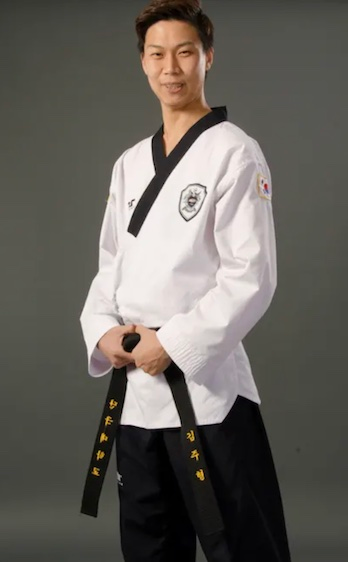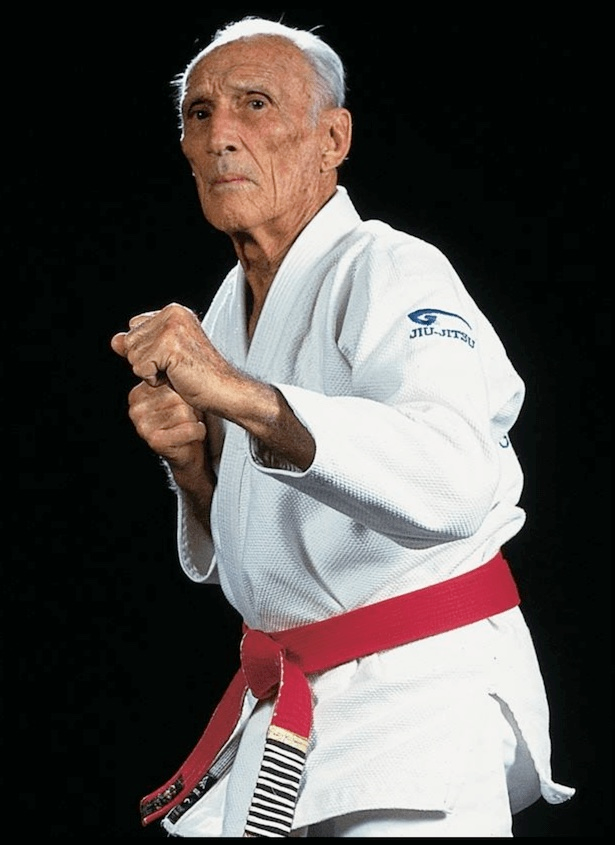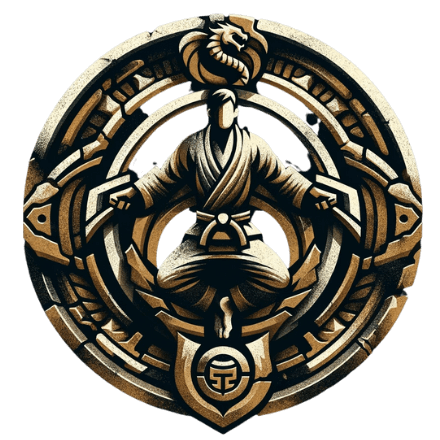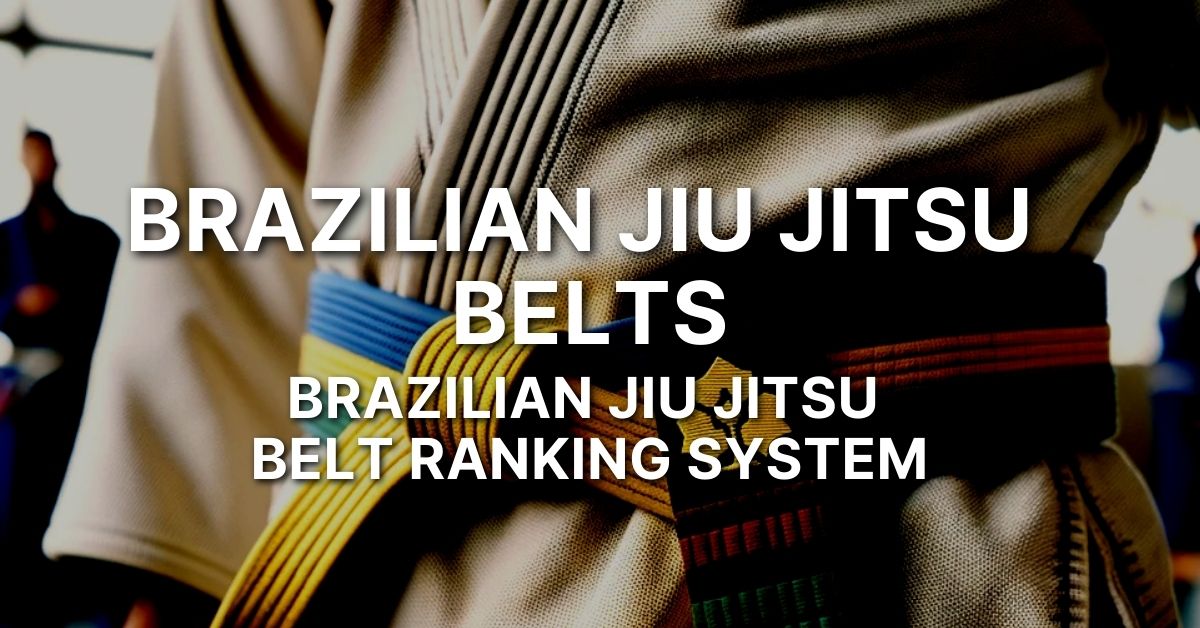There are many different Brazilian Jiu Jitsu belts, each with its own meaning and level of expertise. But what do these belts actually mean? And how do you progress through the ranks?
In this blog post, we’ll take a look at the different belts in Brazilian Jiu Jitsu and what they represent. We’ll also explore how you can progress through the official belt ranking system, how many belts are there, and how to earn your own Jiu Jitsu belt.
So let’s get started!

Jjiu Jitsu Belt Ranks
In Brazilian Jiu Jitsu, there are a variety of different belts that practitioners can achieve.
The Jiu Jitsu Belt System goes from white to black, with each color representing a different level of skill and knowledge. In addition, there are also a few different ranks within each belt.
There are five main belt ranks in BJJ not including the coral and red belts.
Please remember that it differs from the Gracie Jiu Jitsu Belt System.
Here is a brief overview of the different belt colors in Brazilian Jiu Jitsu.

White Belt
In Brazilian Jiu Jitsu, the white belt is the introductory belt representing a beginner level of proficiency.
A white belt-level practitioner typically has less than six months of experience in BJJ.
The road to a black belt is very long, and it can take 3-10 years to achieve the rank of black belt, depending on how frequently you train.
During white belt training, it is important that you maintain a positive attitude and refrain from forming bad habits as they will be difficult to break later on.
A white belt should also be open to learning and not resistant to change as they progress further in their BJJ journey.

Blue Belt
Blue is the second level of progressed belts in Jiu Jitsu.
After a dedicated grappler has spent enough time on the mat and earned their white belt, they are then promoted to blue belt.
You need to be at least 16 years old to get a blue belt (rules by The International Brazilian Jiu Jitsu Federation).
The average time it takes to achieve this rank is anywhere from 1-3 years, with many people spending closer to 3 years training before being promoted.
The key factor in being promoted to blue belt is not necessarily the length of time spent training, but being able to show technical and fundamental knowledge of Jiu Jitsu.
A blue belt practitioner should be able to demonstrate a good understanding of Jiu Jitsu theory, as well as be able to execute basic techniques with relative ease at the blue belt level.

Purple Belt
Purple belt is the intermediate adult rank in Brazilian Jiu-Jitsu.
The purple belt level practitioner has gained a large amount of knowledge, and purple belts are generally considered qualified instructors.
In other martial arts, a student with a comparable amount of experience is often ranked as a brown belt.

Brown Belt
Brown belt is the penultimate adult rank in Brazilian Jiu Jitsu.
The brown belt holder has acquired a large amount of technical knowledge and a high level of mastery of fundamental techniques and at least five years of dedicated training.
Other than holding the coveted black belt, brown is the only belt that does not have a degree (i.e. 1st, 2nd, 3rd degree).
Brown belts are generally expected to teach lower-ranked students and help run the academy with the guidance of the head instructor(s).

Black Belt
The black belt is the apex of one’s Jiu Jitsu journey. It takes most people approximately 10 years to earn a black belt, with the average time being closer to 11-12 years for black belts.
The process of becoming a black belt is long and arduous, with years of consistent training, learning, and drilling. In order to achieve a black belt in martial arts, one must be extremely proficient in all areas of Jiu Jitsu, from Guard Passing to Submissions.
The Black Belt also signifies a high level of discipline and commitment both on and off the mats.

How To Earn A Belt In Brazilian Jiu Jitsu
As with any skill, the journey to becoming a proficient Brazilian Jiu Jitsu practitioner is marked with a series of tests, or in this case, BJJ belts.
The belt rank system in Brazilian Jiu Jitsu is designed to measure a student’s progress as they learn BJJ, and each new belt signals a significant increase in both technical knowledge and practical skill.
Let’s take a look at how to earn each belt in Brazilian Jiu Jitsu, from the first white belt all the way to the coveted black belt.
White Belt
The white belt is the first belt in BJJ.
A prospective student must first demonstrate a willingness to learn and must be able to adhere to the academy’s rules and guidelines.
There are no prerequisites for signing up for class and starting from scratch.
The average time spent as a white belt is generally between 6 and 24 months, although this varies considerably depending on the individual’s training schedule, talent, effort, and dedication.
Blue Belt
In Brazilian Jiu Jitsu, the blue belt is the second adult rank in belt promotions. It is considered a beginner level rank, with the exception that a blue belt student has knowledge that far surpasses that of the general martial arts practitioner or self-defense student.
The average time it takes a dedicated BJJ practitioner to achieve a blue belt is approximately 2-3 years, depending on how often they train.
Once a student has earned their blue belt, they are considered to be familiar with all of the basic techniques of Brazilian Jiu Jitsu. This includes everything from self-defense applications to sports specific techniques used in gi and no-gi competition.
A blue belt should be able to effectively implement basic jiu jitsu theory and principles in both training and live rolling (sparring). A striking contrast between a white and blue belt BJJ practitioner is their intent and aggression level when sparring.
White belts tend to go 100 miles per hour, using brute force and athleticism to try and finish the fight as quickly as possible. They also tend to make many mistakes, as they lack the technical expertise of more experienced belts.
Blue belts have calmed down considerably from their white belt days. They have developed a better sense of timing and distance, allowing them to control the pace of the match.
They also know how to properly execute at basic blue belt level jiu jitsu techniques with reasonable proficiency.
While they are still very much in the learning phase of their development, blue belts no longer make novice mistakes such as exposing their back or failing to defend submissions properly.
Purple Belt
In Brazilian Jiu Jitsu, the purple belt represents a tremendous landmark in a student’s progress. It is the belt that separates the “men from the boys,” so to speak and is the intermediate adult ranking in BJJ Belt ranks.
Granted, there is still a lot of learning and growth to be had beyond the purple belt level practitioner, but those who earn it have come a long way from their white belt days refining techniques and demonstrating well rounded skills set.
They have developed a strong technical foundation and are well on their way to becoming true masters of the sport.
To earn a purple belt, students must first achieve the rank of brown belt. The process of getting there requires years of dedication and hard work, but once achieved, a purple belt signifies that a student is no longer a beginner.
There are many different techniques that purple belts need to master in order to be successful on the mat. Some of these include:
- The basics: Students must have a firm understanding of all the basic techniques before they can move on to more advanced ones. This includes everything from proper posture and breathing to basic moves like the guard and taking the back.
- Defense: Purple belts need to be able to defend themselves against all kinds of attacks, both from opponents with different skill levels and from multiple opponents at once. This requires not only technical knowledge but also strength, speed, and stamina.
- Offense: In order to be successful in competition, purple belts need to be able to mount an offense against their opponents. This means knowing how to take them down and submit them using various chokeholds and joint locks.
- Strategy: A large part of Brazilian Jiu Jitsu is mental as well as physical. Purple belts need to be able to think ahead and develop strategies for both attack and defense. This includes knowing when to engage an opponent and when it’s better to back off and regroup.

Brown Belt
In Brazilian Jiu Jitsu, the brown belt is the penultimate stage before black belt. To be awarded a brown belt, a fighter must demonstrate significant technical proficiency and a deep understanding of BJJ theory.
The brown belt is also a significant stage in heart development. A brown belt typically requires a person often characterized by their “toughness” – they have usually fought their way through many tough matches and have developed a much thicker skin than when they were first starting out.
Earning a brown belt is an impressive accomplishment and one that should be celebrated. Here are a few tips on how to earn your brown belt:
- Train regularly and consistently
To earn a brown belt, you need to put in the time on the mats. This means training regularly, preferably multiple times per week.
- Make sure you are drilling and working on your technique
It’s not enough to just show up to class – you need to be actively working on improving your technique. This means drilling moves over and over again so that they become second nature.
- Spar with higher-level partners
One of the best ways to get better is to spar with people who are better than you. This will push you to improve and help you better understand what it takes to be successful at this level.
- Enter tournaments
Competitions are a great way to test your skills and see where you stand in relation to other fighters in your weight class and skill level. They will also give you valuable experience fighting under pressure which can be useful in real-world situations.

Black Belt
In Brazilian Jiu Jitsu, the Black Belt is the highest achievable rank and indicates a mastery of the art.
The Black Belt takes at least ten years to achieve, although the journey differs for every individual. For some Brazilian Jiu Jitsu students, the road to Black Belt is long and arduous, while others progress more quickly.
The average time to achieve Black Belt is about ten years.
To be promoted to First Degree Black Belt, a fighter must have spent at least five years training Jiu Jutsu. There are usually several required achievements that must be met for a person to be eligible for the promotion.
For example, most academies require that a candidate has earned all six stripes on their white belt, has competed in numerous tournaments, and has demonstrated outstanding character both on and off the mats.
Black Coral Belt (Red And Black)
After reaching the seventh degree, you will be awarded the majestic red and black belt Black Coral Belt. This belt owes its name after the magnificent coral snake design (which looks similar to a fourth-degree black belt in judo).
An eighth-degree black belt will wear a red and white belt.
To be the true Black Coral Belt, you must have had a significant impact on the world of Brazilian Jiu-Jitsu. You are being referred to as master.
At this level, you will have completed seven years of black belt training.
White Coral Belt (Red And White)
After 10 years of black belt practice, you will be awarded the White Coral Belt, which is the eight-degree black belt.
The White Coral Belt (similar to sixth-degree holders in judo) is the highest-ranking color belt and is only awarded to very experienced practitioners. You can tell that coral belts are very rare.
Red Belt

In the words of Renzo Gracie, the red belt is only meant “for those whose influence and fame takes them to the pinnacle of art”.
Respectively, the red belt corresponds to the ninth-degree black belt.
A full timeline for a person to get their black belt at 19 years would end at 67 years old with a red belt.
You are now the Grandmaster.
Notable 10th-degree Brazilian Jiu-Jitsu masters are the Gracie family with Carlos, Oswaldo, George, Gaston, and Helio brothers. There is no living tenth-degree black belt.

Stripe Degrees
In Jiu Jitsu, many academies have adopted stripe degrees on belts. They used to signify progress and experience.
First Degree
To be promoted to First Degree Black Belt, a fighter must have spent a minimum of five years training Jiu Jutsu. There are usually several required achievements that must be met in order for a person to be eligible for promotion.
For example, most academies require that a candidate has earned all six stripes on their white belt, has competed in numerous tournaments, and has demonstrated outstanding character both on and off the mats
Second Degree
There are nine grades in Jiu Jitsu, with each one becoming progressively more difficult to achieve.
The first six grades are represented by different colored belts, while the last three grades (7th-9th) are represented by stripes on a black belt.
The second degree is represented by a red belt.
Third Degree
The third degree is the highest rank achievable in Jiu Jitsu.
Achieving a third degree generally takes a minimum of ten years for BJJ practitioners, and sometimes up to fifteen or more.
To be awarded a third degree, a Jiu Jitsu practitioner must demonstrate an extremely high level of knowledge and proficiency in the art.
Fourth Degree
The fourth degree is the highest rank in the Gracie Jiu-Jitsu ranking system.
A fourth degree black belt is indicated with a red and black striped belt.
The rarity of having a fourth degree is due to the Gracie family reserving this rank for those who have been influential in teaching and spreading jiu-jitsu.
Only a handful of people have received this honor, starting with Grandmaster Helio Gracie himself.
Fifth Degree
Fifth-degree black belt is the highest Rank achievable in Jiu-Jitsu.
To achieve this rank, you must have dedicated a lifetime to the art.
This grade is not given lightly and is only awarded to those who have made a significant contribution to Jiu Jitsu.
Gracie Jiu-Jitsu Belts
Apart from the traditional Brazilian Jiu Jitsu ranking system, there is also the Belt System in Gracie Jiu Jitsu.
This system was developed by the Gracie family and features a number of key difference in for young students and adults alike.


0 Comments